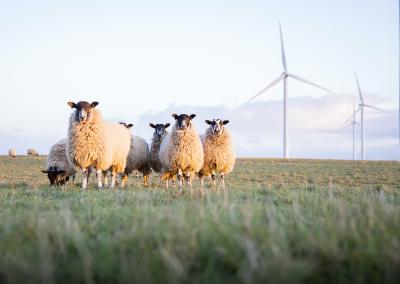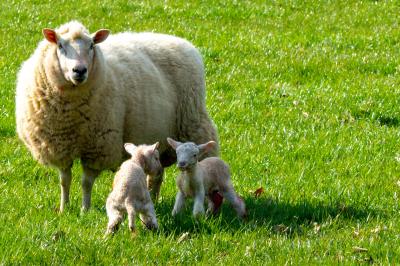
With scanning underway and lambing for most people just around the corner, now is the time to start looking ahead and making sure your ewes are ready for their big day.
Taking time to body condition score ewes at scanning can be time well spent while ewes are being handled anyway. Picking out thin ewes as well as grouping for lamb numbers can help reduce problems at lambing time.
Target Body Condition Score (BCS) as follows:
Lowland Farm: 3.5 mid-pregnancy. 3 lambing.
Upland Farm: 3 mid-pregnancy. 2.5 lambing.
Hill Farm: 2.5 mid-pregnancy. 2 lambing.

Picking out thin ewes at scanning allows enough time for extra supplementary feeding to take place before lambing. The final six weeks of pregnancy are vitally important. During this time 70 per cent of lamb growth takes place and colostrum and udder development occur. This causes the ewe’s feed demands to double, but her appetite will fall due to the presence of lambs restricting rumen size. This can cause problems as knowing how much and what to feed to hit these demands can be difficult.
Getting your forage analysed can be a good starting point. Knowing the energy (ME) and protein (CP%) of your forage allows you to work out how much concentrate or cereal feeding is required to meet ewes’ demands in the final few weeks of pregnancy. Speak to your vet or nutritionist if you have any questions about feeding.
If this feeding is inadequate then ewes will begin to mobilise their own fat reserves causing them to lose condition, making ewes even thinner at lambing.
Thin ewes at lambing time are more likely to have low birth weight lambs, poor colostrum quality and low milk yields. All these have an adverse effect on lamb survivability and future live weight gain.

A relatively cheap way to assess diet suitability is by blood testing a mix of 10 multiple-bearing ewes three weeks before the start of lambing. These blood tests can check ewes’ energy and protein status going into their final weeks, and cost around £50-75. If any energy or protein deficiencies are found it allows feeding rates to be increased before lambing and peak demand.
Formulating a diet is only half the battle. You can have the best diet in the world, but it is pointless if you can’t get it into all your ewes. Making sure your ewes’ housing and feed space allowances are met can make sure all ewes can access enough forage and concentrate and this is just as important.
In-lamb lowland ewes require 1.2-1.4m2 and hill ewes 1-1.2m2 of shed space. When feeding ad-lib forage or Total Mixed Ration (TMR), each ewe should have 17.5-20cm of feed space, and 40-60cm per ewe when feeding rationed concentrates, depending on ewe weight and size. This allows enough space for ewes to access enough feed and reduce competition at the feed face. If there is less feed space available, then lower ranked ewes (thin, lame, old, young) are likely to be bullied away from food and are unlikely to meet their nutritional demands.
Spending a day or two before the lambing rush assessing ewes, diet and shed space can be time well spent. Getting these things right will give ewes their best chance of lambing unassisted and giving their lambs the best start in life.